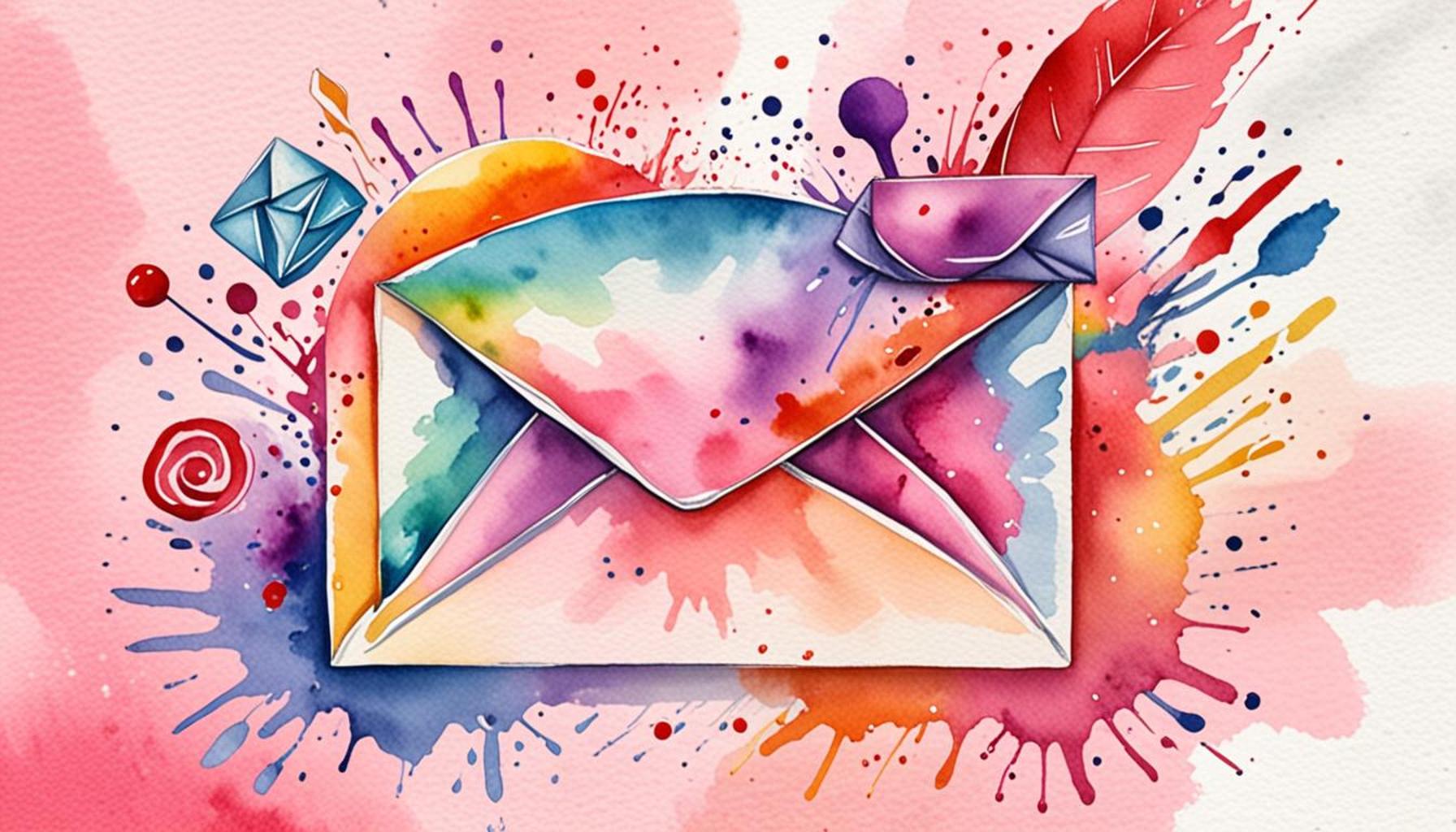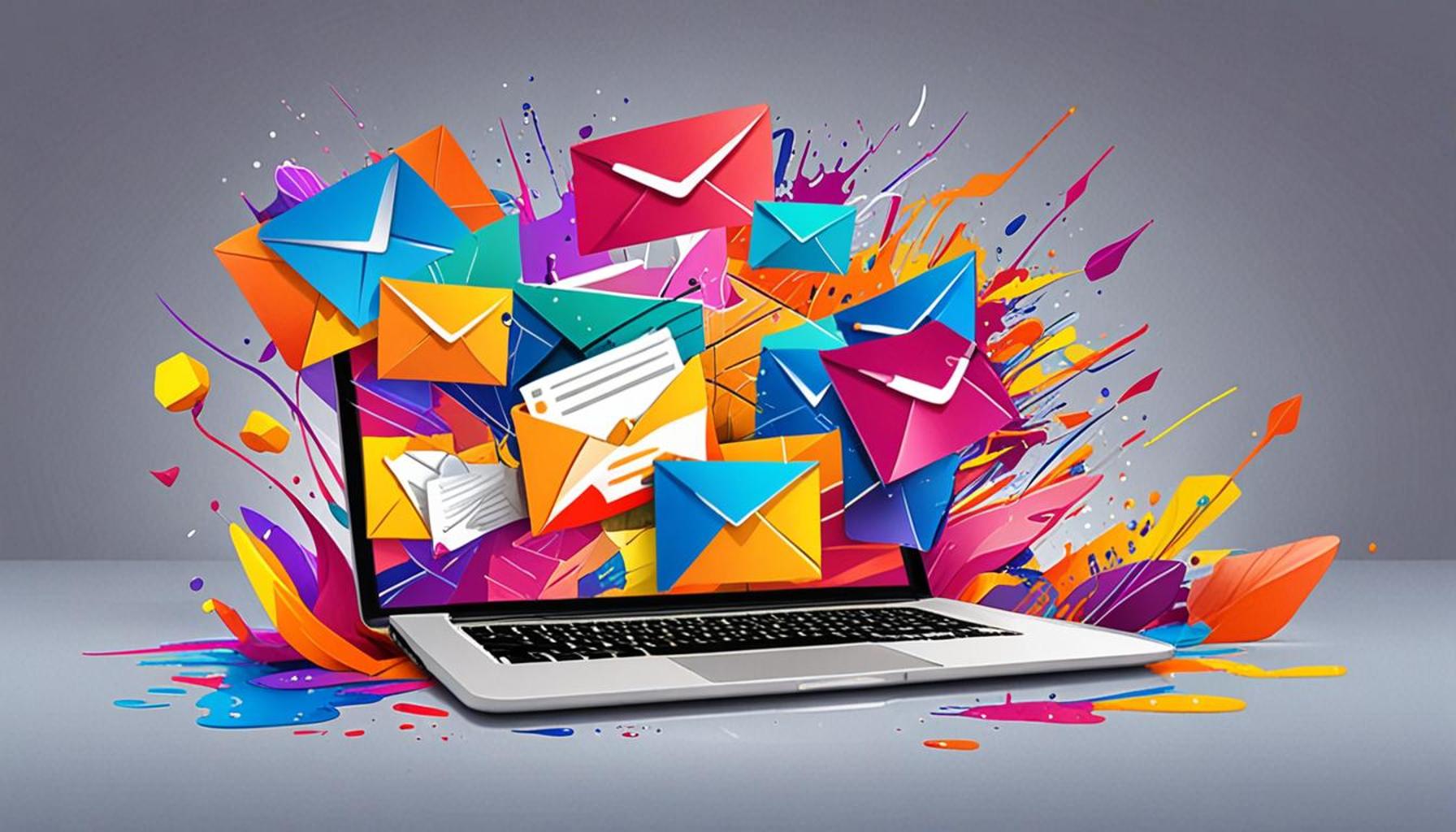The Psychology of Colors in Emails: How to Influence Consumer Behavior

The Impact of Colors on Consumer Behavior
In the bustling realm of email marketing, colors play a pivotal role in influencing consumer behavior. Research indicates that color can significantly impact emotions, perceptions, and even purchasing decisions. Given that consumers often make snap judgments about brands within seconds of viewing content, businesses must realize the importance of utilizing color strategically to connect with their audience effectively.
Various aspects of color psychology can be leveraged to enhance marketing efforts:
- Emotional Responses: Different colors evoke distinct feelings. For example, red can create a sense of urgency, sparking a quicker response from consumers and often being utilized in clearance sales. Conversely, blue tends to instill a sense of trust and calm, making it a popular choice among financial institutions and tech companies.
- Brand Recognition: Consistent use of color strengthens brand identity. Companies like Coca-Cola’s signature red and McDonald’s golden arches are instantly recognizable, showcasing how color contributes to a brand’s image. Creating a cohesive color palette across email communications can ensure customers easily identify and recall a brand.
- Attention Grabbing: Specific colors are more effective at drawing attention to essential elements within an email, like calls-to-action. For instance, brightly colored buttons in contrasting shades, such as an orange button on a blue background, tend to stand out more and encourage users to click through.
Understanding how different colors impact consumer perceptions can lead to more effective email campaigns. For instance, green is often associated with health, tranquility, and nature, making it a popular choice for brands in the wellness and organic sectors. Brands like Whole Foods leverage green tones to evoke feelings of freshness and sustainability. On the other hand, yellow can conjure cheerfulness and positivity, making it an ideal color for promotional emails and sales alerts, as it captures attention and creates a sense of excitement.
To maximize engagement, marketers should analyze their target audience and tailor their color strategies accordingly. For example, tech-savvy younger consumers may respond more favorably to vibrant, eye-catching hues, whereas an older demographic may prefer softer, more muted tones. By experimenting with A/B testing in email campaigns, marketers can determine which color schemes yield the best results for their specific audience.
As you continue to explore the intricate relationship between color and consumer behavior, consider how the strategic use of colors in emails can not only enhance engagement but also significantly impact purchase decisions. The right hues could very well be the key to unlocking success in your email marketing efforts.
RECOMMENDED: Check out this similar article
Understanding Color Associations and Their Effects
When it comes to email marketing, the significance of color associations cannot be overstated. Colors elicit automatic emotional responses that can either entice or alienate potential customers. This phenomenon is crucial for businesses aiming to enhance their email campaigns by better understanding how color choices will resonate with their audience.
Each color carries inherent meanings and cultural associations that can vary by region and demographic. In the United States, where trends and social norms can shift rapidly, marketers benefit from a keen awareness of the psychological effects colors may have. Here are some key color associations along with their potential impacts:
- Red: Often associated with excitement and urgency, red can grab attention and stimulate quick reactions. Its effectiveness is undeniable, especially in limited-time offers or flash sales.
- Blue: Known for promoting feelings of stability and trust, blue is particularly fitting for brands focused on security and professionalism, such as banks and tech companies.
- Green: Symbolizing growth and nature, this color is ideal for businesses promoting sustainability or health-related products. Its calming effect can foster a sense of tranquility, making it popular in wellness marketing.
- Yellow: Best known for its cheerful and optimistic vibe, yellow can capture attention and convey positivity. Its bright hue works effectively in promotional emails aimed at generating excitement.
- Purple: Often linked to luxury and sophistication, purple can evoke a sense of exclusivity. It appeals to consumers looking for premium experiences or products.
Additionally, the interaction between colors also plays a pivotal role—when combined, certain colors can amplify or dilute a message’s effectiveness. For instance, combining blue and green might convey a serene yet grounded impression, aligning well with brands that emphasize trustworthiness and well-being. Furthermore, lighter shades often appear more approachable, while darker shades convey a sense of formality or elegance.
Another crucial aspect of color psychology that marketers should consider is the significance of color contrast. Effective contrast can not only enhance the readability of the email but also guide the recipient’s eye toward vital information, such as special offers or call-to-action buttons. A high-contrast color scheme allows important features to pop, ultimately encouraging engagement and driving traffic.
To ensure successful email campaigns, businesses ought to stay updated on current color trends and consumer preferences. Regularly surveying customers or analyzing performance metrics through A/B testing can deliver insights into how different color palettes resonate with varied audience segments. By iteratively refining their approach, marketers can harness color psychology to optimize consumer engagement.
The journey of exploring colors in emails doesn’t end here. As businesses aim to cultivate connections with consumers, understanding the psychology of colors can unlock new pathways to influence behavior, enhance branding, and drive conversions effectively.
The Psychology of Colors in Emails: How to Influence Consumer Behavior
Understanding the psychology of colors can significantly enhance the effectiveness of email marketing strategies. Colors evoke emotions and can impact decision-making processes in consumers. For instance, studies show that red can create a sense of urgency, making it effective for limited-time offers, whereas blue tends to foster a sense of trust and security, which is ideal for brands looking to establish credibility.
Furthermore, the choice of colors can also reflect a brand’s identity. A consistent color palette strengthens brand recognition and helps businesses create a memorable impression among their audience. Different colors can stimulate various reactions; for example, green is often associated with health and tranquility, making it popular in industries like wellness and finance.
Moreover, incorporating color into email design isn’t only about aesthetics. Colors should guide the consumer’s journey through the email. Using contrasting colors for call-to-action buttons can immediately draw attention and improve click-through rates. Investigating how specific hues resonate with target demographics can lead to more personalized and engaging communications.
As a part of your email content strategy, it’s essential to test different color combinations. A/B testing different variations can provide insight into what colors elicit stronger responses from your audience, thereby optimizing engagement and conversions.
| Color Psychology | Impact on Consumer Behavior |
|---|---|
| Red | Creates urgency and encourages immediate action. |
| Blue | Fosters trust and reliability, ideal for service-oriented brands. |
| Green | Encourages calmness and is often linked to sustainability. |
| Yellow | Promotes optimism and can grab attention effectively. |
Ultimately, leveraging color in email marketing is not just an art; it’s a science that can be fine-tuned to meet the needs and preferences of your target audience. As you dive deeper into color psychology, remember that the right hues could be the key to unlocking higher engagement rates and improved customer interactions.
YOU MAY ALSO LIKE: Read read another article
The Role of Cultural Influences in Color Perception
As businesses strive to maximize the effectiveness of their email marketing campaigns, it becomes imperative to recognize that cultural influences significantly shape color perceptions. Understanding that different cultures attribute various meanings to colors can empower marketers to tailor their email strategies for diverse audiences. In a multicultural society like the United States, where ethnic diversity is a hallmark, weaving cultural significances into color choices can amplify connection and engagement.
For instance, while red is often associated with excitement in Western cultures, it can signify danger or caution in some Eastern cultures. Knowing this, marketers can avoid potentially alienating segments of their audience by either using red thoughtfully or opting for alternative colors more attuned to their target demographic. Similarly, white, which denotes purity and peace in American culture, may represent mourning in some Eastern cultures, further emphasizing the need for cultural awareness and sensitivity.
A closer understanding of colors and their psychological effects can also be heightened by observing demographic trends. Younger audiences tend to favor vibrant, bold colors that evoke energy and modernity. In contrast, older consumers may prefer muted palettes that exude sophistication and warmth. By segmenting their email lists according to age and lifestyle, marketers can leverage color psychology to elicit optimal responses from each group.
Case Studies and Success Stories
Real-world examples of successfully harnessing color psychology in email marketing abound, shining a light on this strategy’s practical implications. One notable case is that of a popular online retailer that strategically used color psychology to increase its email conversion rates by over 20%. By experimenting with email designs, the brand found that incorporating shades of green in messages associated with eco-friendly products resulted in significant consumer engagement. This achievement underscores the importance of aligning colors with brand identity and target values.
Another compelling instance can be seen in non-profit organizations that aim to promote charitable giving. A renowned charity altered its email campaigns to include more blue and yellow tones. This combination not only inspired feelings of trust and warmth but also evoked a sense of urgency and joy, encouraging recipients to donate. Following this simple yet effective tweak, the charity reported a substantial increase in donor response rates, illustrating how color can transcend aesthetics and drive action.
Implementing A/B Testing for Color Optimization
To fully harness the potential of color psychology, businesses should invest in A/B testing to rigorously analyze color choices in email campaigns. By splitting their audience and experimenting with different color schemes for similar content, marketers can acquire invaluable insights into what resonates best with their subscribers. According to recent studies, companies that regularly deploy A/B tests see noticeable increases in engagement rates, highlighting the importance of data-driven decision-making.
For example, one e-commerce brand utilized A/B testing to compare the efficacy of a red versus a blue call-to-action button within their promotional emails. Eventually, they discovered that the blue button outperformed the red one, resulting in a significant uptick in click-through rates. This evidence reinforces the notion that a simple change in color can lead to profound differences in consumer behavior.
As email marketers navigate increasingly competitive landscapes, understanding the psychology behind colors and their cultural implications can empower brands to create genuinely impactful campaigns. By fostering emotional connections through color choice and continuous testing, businesses can drive conversions and build lasting relationships with consumers.
YOU MAY ALSO LIKE: Read read another article
Conclusion
In conclusion, the psychology of colors in email marketing serves as a powerful tool that can influence consumer behavior in significant ways. By understanding the intrinsic meanings of colors and how they can evoke emotions, marketers can craft more engaging email campaigns that resonate with their target audiences. Integrating cultural considerations into color selection enhances this strategy, allowing businesses to connect authentically with diverse consumers. As demonstrated through various case studies, successful applications of color psychology, such as enhanced conversion rates and increased donor responses, highlight the concrete benefits of this approach.
Moreover, the implementation of A/B testing empowers marketers to refine their strategies continuously, entering a cycle of optimization that focuses on data-driven insights. Through experimentation, attention to demographic trends, and cultural nuances, brands can determine which colors generate the strongest responses from their audiences. This ongoing adaptation not only fosters consumer trust and loyalty but also positions businesses strategically in a competitive digital landscape.
As we move closer to a more dynamic and visually-driven communication era, exploring the depths of color psychology offers endless opportunities for innovation in email marketing. Brands that effectively leverage this knowledge can create memorable experiences and foster deeper connections with their subscribers, ultimately leading to enhanced engagement and increased sales. Understanding and applying the principles of color psychology in email campaigns can undoubtedly change the game for marketers looking to maximize their impact in the inbox.



